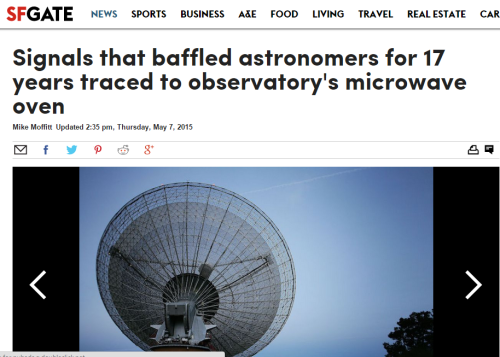This Is A Trichroic Beam Splitter.


This is a Trichroic Beam Splitter.
Using this splitter a white beam of light can be separated into three colours. Red, Blue and Green.
Source
More Posts from Fillthevoid-with-space and Others

Light Echoes Used to Study Protoplanetary Disks : This illustration shows a star surrounded by a protoplanetary disk. A new study uses data from NASAs Spitzer Space Telescope and four ground-based telescopes to determine the distance from a star to the inner rim of its surrounding protoplanetary disk. Researchers used a method called photo-reverberation, also known as light echoes.
js


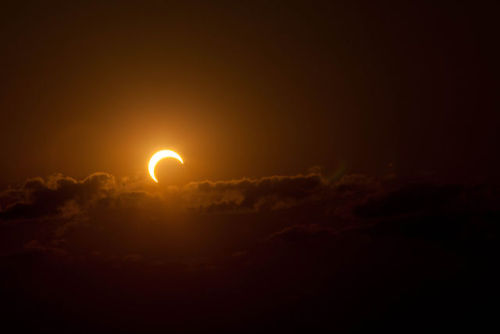

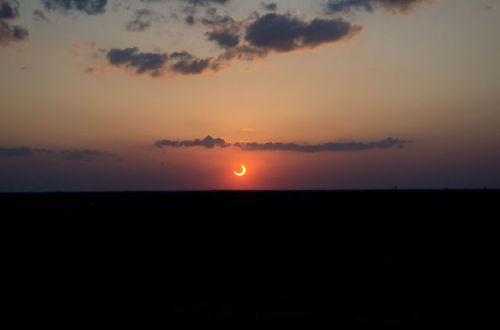


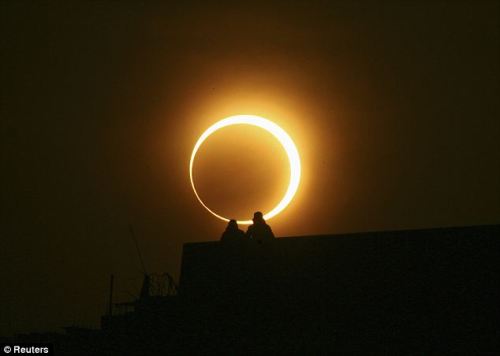
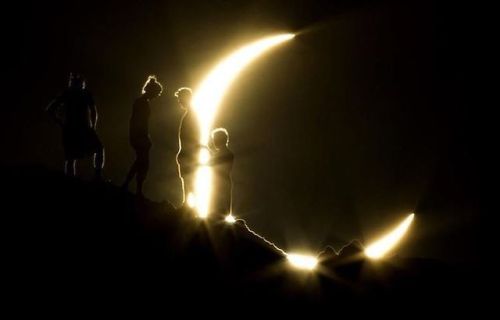
A ‘Ring of Fire’ solar eclipse is a rare phenomenon that occurs when the moon’s orbit is at its apogee: the part of its orbit farthest away from the Earth. Because the moon is so far away, it seems smaller than normal to the human eye. The result is that the moon doesn't entirely block out our view of the sun, but leaves an “annulus,” or ring of sunlight glowing around it. Hence the term “annular” eclipse rather than a “total” eclipse.

One-year countdown to solar eclipse, August 21, 2017: path of totality overlaid on U.S. population density and interstate map.

(I broke the last link, whoops)
Another week of theory, but no fun new particles. Instead, hear me try to say a lot of names of scientists or their eponymous equations as I talk about dark energy in the universe! Learn what some astronomers think it is and why other astronomers think there are better explanations for certain nutty galactic phenomena.
Below the cut are my sources, music credits, a vocab list, and the transcript of this episode. Let your voice be heard and tell me what you think I should research next by messaging me here, tweeting at me at @HDandtheVoid, or asking me to my face if you know me in real life. And please subscribe to the podcast on iTunes, rate it and maybe review it, and tell friends if you think they’d like to listen!
(If anything about dark matter or dark energy or cosmic microwave background radiation confused you over the past few podcasts, for sure send me your questions so I can ask someone more qualified than me—my doctorate student friend! My thoughts on the next episode are still the Voyager golden records, space race history, the transit of Venus, the Moon landing, Edmond Halley, or Dark Sky Preserves and it will be up on November 20th.)
Glossary
baryons - heaviest particles. Ex. Protons, neutrons. In astroparticle physics, electrons are included in baryonic matter.
cosmic microwave background radiation - the electromagnetic radiation left over from the time of recombination in Big Bang cosmology.
dark energy - a theoretical force made up of unknown, undetectable energy. It is used to explain why the universe is expanding more rapidly over time instead of slowing its expansion.
dark matter - a theoretical mass made up of unknown particles that have not been created on Earth. It is used to explain why galaxy clusters have 10x the mass that their light output suggests they would have; why distant stars on the edges of spiral galaxies orbit at the same speed as stars near the center of the galaxy; and the accretion of gases that created galaxies at the beginning of the universe.
fundamental forces - four fundamental forces in our current model of the universe: the strong and weak nuclear forces, the electromagnetic force, and gravity.
gravitational lensing - when light from more distant sources passes near a massive star, galaxy, or galaxy cluster and the object’s gravity bends the light like a lens to provide a warped angle view of space.
Transcript
Sources
Dark energy via NASA
Dark energy via Hubble
“The strangeness of dark energy is thrilling.”
Fundamental forces via Georgia State University
Dark energy via Science Magazine (April 2017)
László Dobos: “We assume that every region of the universe determines its expansion rate itself.”
Dark energy and the South Pole Telescope via Smithsonian Magazine (April 2010)
“Knowing what dark matter is would help scientists think about how the structure of the universe forms. Knowing what dark energy does would help scientists think about how that structure has evolved over time—and how it will continue to evolve.”
Intro Music: ‘Better Times Will Come’ by No Luck Club off their album Prosperity
Filler Music: ‘Even The Darkness Has Arms’ by The Barr Brothers off their album The Sleeping Operator
Outro Music: ‘Fields of Russia’ by Mutefish off their album On Draught
How hard is it to become an austronaut? I want to start to studie astrophysics and I don't know if I'll ever get any kind of job. Do you have any tips for people like me?
Astrophysics is a perfect field for pursuing any work at NASA! A degree in a STEM field is a requirement of becoming an astronaut, but other than that there are many possibilities. One of the best things about the astronaut office is its diversity. We are scientists, engineers, military pilots, flight test engineers, medical doctors, etc. etc. My biggest tip is to ensure you are pursuing what it is you are passionate about as that’s the only way to truly become exceptional at what you are doing, and most importantly, to be happy doing it. Passion, hard work, and dedication will get you there. Good luck!
Just a reminder that the first NASA astronauts were supposed to be women because generally they are smaller, lighter (less weight in the cockpit means less fuel required) and eat less than men and so would be easier to accommodate in space.
The world's oldest story? Astronomers say global myths about 'seven sisters' stars may reach back 100,000 years https://phys.org/news/2020-12-world-oldest-story-astronomers-global.html

Holy shit, this is cool!
So many cultures call the Pleiades some variation of the "seven sisters" despite only having six visible stars. There only appear to be six because two of the stars are so close together as to appear as one.
The myths also mention one sister leaving or hiding to explain why there's only six. And based off observations and measurements, those two that are so close together used to be visibly separate. One literally has moved to hide.
And based off the similarities between the more commonly known Greek myth and the Aboriginal Australian myth, plus some other stuff, this myth could possibly even date back to when humanity still all resided in Africa!

Did you know that when we classify stars, we’re comparing different types of stars but also stars at different stages of their life cycles? This is the second in a two-part episode about star classifications (go listen to Part 1 if you haven’t already; or listen to this one first and then listen to Part 1, it’s not exactly spoiler territory here). In this podcast, I talk about the various ways we've chosen to interpret observational data on stars, from observing the bright sky-dots to evaluating how bright they are by comparing them to each other, and all the new things we can do with new observational techniques. Never fear, Harvard observatory’s computers make a significant appearance again in this one!
I did my best to explain everything in as comprehensible terms as possible but you can hit me up with questions if you have them! I’m also on Twitter at @HDandtheVoid if you’d rather ask me there. And go ahead and check out the podcast on iTunes, rate it or review it if you’d like, and subscribe! I’ll always post all the extras here on tumblr but iTunes is probably more convenient for downloading.
Below the cut are my sources, music credits (thanks Elena for the filler music suggestion, very on-the-nose), vocab list, and the transcript. I mention a couple of books and quote a couple people in this episode so if you want to see that written down, those sources are there as well. Let me know what you think of this episode, let me know what you think I should research next*, tell me a fun space fact… anything’s helpful!
*(My thoughts were planets or looking into a couple major astronomers; either Edmond Halley or Tycho Brahe <3 or maybeStephen Hawking? Let me know by the 23rd so I can get a podcast up by July 3rd!)
Glossary:
Charge-Coupled Device (CCD) - a device that moves an electrical charge to shift the signal between incoming photons to turn them into electron charges that can then be read as an image. It’s used in digital cameras and in astronomy for UV-to-infrared applications.
deep-sky object - any cosmological object that isn’t individual stars or something from our Solar System. It’s a classification that includes nebulae, galaxies, and star clusters, and it has its roots in amateur astronomy.
Hipparcos satellite - the European Space Agency ‘high precision parallax collecting satellite’ that operated between 1989 and 1993. It gathered astronomical and photometric data of stars and was highly accurate in positioning and cataloging the star information it acquired on its four-year mission. Its data was published in 1997 in two catalogs: the Hipparcos Catalogue, distributed in print as well as on CDs and mapped 118,218 stars; and the Tycho Catalogue, distributed only on CDs and mapped 1,058,332 stars. The Tycho-2 Catalogue was an updated version of the Tycho Catalogue made with more refined imaging techniques and re-released on CDs and online in 2000 with over 2 million stars mapped.
neutron star - a type of star that has gone supernova, when the surviving core is 1.5 to 3 solar masses and contracts into a small, very dense, very fast-spinning star.
pulsar - a type of neutron stars that spins very, very fast: a kind of variable star that emits light pulses usually between 0.0014 seconds and 8.5 seconds.
stellar photometry/photometrics - measuring the brightness of stars and the changes of brightness over time. Previously used photographic plates and visual equipment in professional observatories, but shifted after an international photoelectric system was established in 1951. Currently we use photoelectric devices, such as CCDs.
stellar spectra classification - developed at Harvard Observatory in the 20th century, a categorization of stars based on stellar surface temperatures rather than actual compositional differences, gravity, or luminosity in stars. From highest temperature to lowest, the seven main stellar types are O, B, A, F, G, K, and M. O, B, and A type stars are often referred to as early spectral types, while cool stars like G, K, and M are known as late type stars, even though these titles are based in disproven ideas about stellar evolution.
Script/Transcript
Sources:
Standard stellar types via University of College London
List/timeline of major historical star catalogs
A brief history of early star catalogs, since the International Astronomical Union made a new star catalog in 2016.
A history of the Messier list
A history of the Messier List and how amateur astronomers use it
The Messier List
A really detailed Messier List, including Messier’s own observations on the object along with what it is currently understood to be
`Deep Sky Observers Companion online database
The Caldwell List via SEDS
The Caldwell List via the Astronomical League
Translation of ‘Durchmusterung’ via PONS online translation
Some hilarious mnemonics that are an alternative to the girl-kissing one to remember the order of stellar spectra. I don't know why there’s an entire page dedicated to this but good on you, Caltech.
Photometry overview via the Astronomical Society of South Australia
Hipparcos Catalog via NASA
History of the Hipparcos satellite and subsequent catalogs via ESA
Tycho-2 Catalog via NASA
The Hipparchos and Tycho catalogues online and downloadable if you have a whole lot of storage space to put them in
The U.S. Navy’s Naval Meteorology and Oceanography Command website has a list of recommended informational catalogs, last updated in November 2004
Information on current star charts, specialized and general, and how to download them
The Research Consortium on Nearby Stars’ website, working on cataloging and characterizing all stars within 10 parsecs/32.6 light years of Earth
The Smithsonian Astrophysical Observatory star catalog, which goes to V=9. Please don’t ask me how the hell it works, I didn’t bother ordering it
Another SAO catalog via NASA’s High Energy Astrophysics Science Archive Research Center website
If you can figure out how to navigate this catalog, you should probably take over this podcast for me.
Soba, Dava. The Glass Universe: How the Ladies of the Harvard Observatory Took the Measure of the Stars. Viking: New York, 2016.
“After all, astronomers could not yet tie any given traits of stars, such as temperature or age, to the various groupings of spectral lines. What they needed was a consistent classification—a holding pattern for the stars—that would facilitate fruitful future research” (91).
“A good number of other blank spaces in her tables pointed up other lacunae, such as missing minimum values, uncertain periods, absent spectra, or questionable variable type” (113).
Annie Jump Cannon: “Since I have done almost all the world’s work in this one branch, it was necessary for me to do most of the talking” (158)
Ogilvie, Marilyn Bailey. Women in Science: Antiquity Through the Nineteenth Century. MIT P: Cambridge, MA, 1986. Located in Google Books preview.
Mack, Pamela E. “Straying from Their Orbits: Women in Astronomy in America.” In Women of Science: Righting the Record. Ed. Gabriele Kass-Simon, Patricia Farnes, Deborah Nash. Indiana U P: Bloomington, IN, 1993 (72-116). Located in Google Books preview.
Selin, Helaine. “Battani” Encyclopaedia of the History of Science, Technology, and Medicine in Non-Western Cultures. Springer Science & Business Media: Berlin, Germany, 2011. Located in Google Books preview.
Intro Music: ‘Better Times Will Come’ by No Luck Club off their album Prosperity
Filler Music: ‘Champagne Supernova’ by Oasis off their album (What’s the Story) Morning Glory?
Outro Music: ‘Fields of Russia’ by Mutefish off their album On Draught
-
 c4ndyc0wb0y liked this · 1 year ago
c4ndyc0wb0y liked this · 1 year ago -
 gigglybastard liked this · 1 year ago
gigglybastard liked this · 1 year ago -
 mxbnatural liked this · 1 year ago
mxbnatural liked this · 1 year ago -
 yvesthepumpking liked this · 1 year ago
yvesthepumpking liked this · 1 year ago -
 dragon-queen21 liked this · 1 year ago
dragon-queen21 liked this · 1 year ago -
 hnrye liked this · 1 year ago
hnrye liked this · 1 year ago -
 deadpoolya liked this · 1 year ago
deadpoolya liked this · 1 year ago -
 i-reblog-stims reblogged this · 1 year ago
i-reblog-stims reblogged this · 1 year ago -
 stimboardboy reblogged this · 2 years ago
stimboardboy reblogged this · 2 years ago -
 makinmuffins liked this · 4 years ago
makinmuffins liked this · 4 years ago -
 katerobe1 liked this · 4 years ago
katerobe1 liked this · 4 years ago -
 m-zzataka reblogged this · 5 years ago
m-zzataka reblogged this · 5 years ago -
 obviouswar liked this · 5 years ago
obviouswar liked this · 5 years ago -
 stratusopacus liked this · 5 years ago
stratusopacus liked this · 5 years ago -
 jimmicisme liked this · 5 years ago
jimmicisme liked this · 5 years ago -
 miss-twix liked this · 5 years ago
miss-twix liked this · 5 years ago -
 fatherizzyisms liked this · 5 years ago
fatherizzyisms liked this · 5 years ago -
 sphinxnomore liked this · 5 years ago
sphinxnomore liked this · 5 years ago -
 yoursisnodisgrace reblogged this · 5 years ago
yoursisnodisgrace reblogged this · 5 years ago -
 blaylocke liked this · 5 years ago
blaylocke liked this · 5 years ago -
 zenos127 liked this · 6 years ago
zenos127 liked this · 6 years ago -
 thatonewildstar liked this · 6 years ago
thatonewildstar liked this · 6 years ago -
 nomewz reblogged this · 6 years ago
nomewz reblogged this · 6 years ago -
 nomewz liked this · 6 years ago
nomewz liked this · 6 years ago -
 besthalfsithever reblogged this · 6 years ago
besthalfsithever reblogged this · 6 years ago -
 foxxymagic liked this · 6 years ago
foxxymagic liked this · 6 years ago -
 olive-beryl-blog liked this · 6 years ago
olive-beryl-blog liked this · 6 years ago -
 heyfixie liked this · 6 years ago
heyfixie liked this · 6 years ago -
 archivist-shanty liked this · 6 years ago
archivist-shanty liked this · 6 years ago -
 gucci-depressione liked this · 6 years ago
gucci-depressione liked this · 6 years ago -
 beardedgiverfun reblogged this · 6 years ago
beardedgiverfun reblogged this · 6 years ago -
 beardedgiverfun liked this · 6 years ago
beardedgiverfun liked this · 6 years ago -
 smth-wicked liked this · 6 years ago
smth-wicked liked this · 6 years ago -
 meawletyran liked this · 6 years ago
meawletyran liked this · 6 years ago -
 isthiscookies reblogged this · 6 years ago
isthiscookies reblogged this · 6 years ago -
 megxolotl liked this · 6 years ago
megxolotl liked this · 6 years ago
A podcast project to fill the space in my heart and my time that used to be filled with academic research. In 2018, that space gets filled with... MORE SPACE! Cheerfully researched, painstakingly edited, informal as hell, definitely worth everyone's time.
243 posts

